3 Ways to Take Notes in Class that Keep Students Engaged
There are many ways to take notes in class so our note-taking days do not have to be sit-and-get. This is the third blog post in the Routines for Classroom Management in the Science Class Series.
In the first two blog posts in this series, I shared an overview of routines and the beginning of class routines. Now we are in the “during class” routines part of this series. Here are the first two blog posts:
What Are the Important Routines for Classroom Management in the Science Class?
How to Have a Successful Beginning of Class Each Day
In This Post
The main focus of this blog post is to share different ways to take notes in class, rather than the different note-taking methods. We will go over three ways that get students more involved and engaged on note-taking days.
Be sure to get your free guide 7 Daily Must-Do Routines to Run Your Science Classroom Like a Pro today!

Disclosure: This post may contain some affiliate links for your convenience. As an Amazon Associate I earn from qualifying purchases with no cost to you.
Note Taking Days
Most teachers will spend one or two days on notes with their students. This is an essential part of teaching and learning. There are different note-taking methods. Students can copy what the teacher writes, the teacher can provide closed notes so students can fill in the blanks, you can use Cornell notes, or students can also find the information they deem important and write it down.
While most of our note-taking days are teacher-directed, it doesn’t have to be. This could be when students explain what they have learned so far, and the teacher guides them to further their learning. Note-taking can be done whole group, in a small group, or with a partner or alone.
Let’s go over these three ways to take notes in class.

Whole group notes
The most common way that we present information to our students is to the whole class. Typically, we have a Powerpoint or slideshow with information we want to give our students. We might also have videos to show during this time to help explain concepts.
Routines we need in place during whole group note-taking are how to take notes, how to pay attention in class without disrupting others, and how to ask questions and participate in class discussions.
We should model how to take notes before expecting students to do this on their own. It is very likely that most students haven’t taken notes before entering our grade level. Or, they have very little experience with this. So, we need to model and show them how to find the information to write down. This will help them when they have to take notes on their own in the future.
We can have our slide show and as we go over it, show them what to write down. Remember to stay quiet while they are writing notes. Students’ brains have a very difficult time listening to instruction AND copying notes.
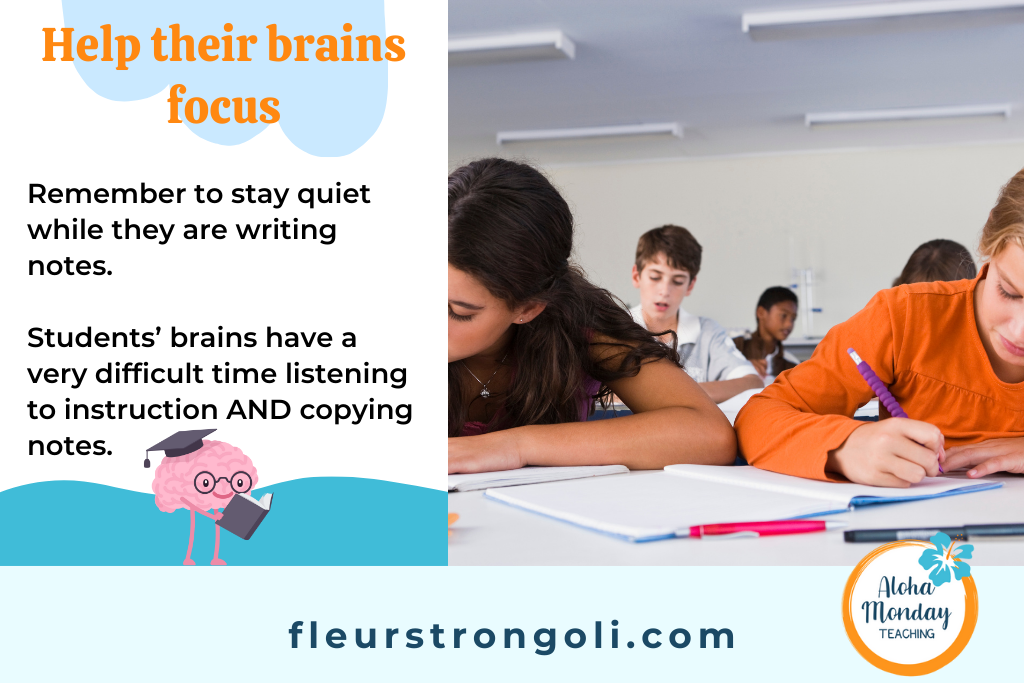
You want to make sure students are paying attention and not being disruptive. They should know how to ask a question or respond to a question by raising their hand or other ways you have taught them.
When you are doing whole group notes, it is SO important to give your students processing time and breaks. You can do this with simple brain breaks or giving them some discussion time. I created a resource that helps me be more intentional with brain breaks and think time. I now insert the slide when I want them to take a brain break.
Read more about whole group notes in this blog post, 3 Must-Haves for a Successful Explain 5E Model
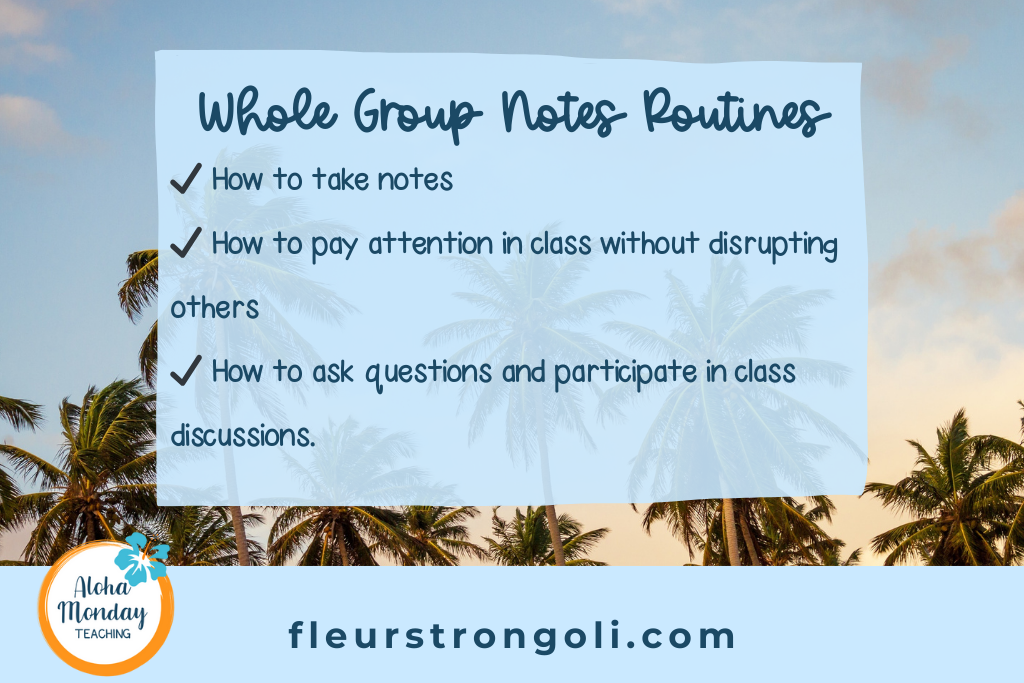
Small Group Notes
Some students enjoy this method of note-taking. It’s a great change to whole group notes. You could set it up like the way I have for independent/partner notes. You’ll read that below.
Or, you can simply edit and print your presentation and give that to students. First, add tasks to your presentation that you would be giving students. For example, if you want them to read a section in their textbook, write that on one of your slides. You can tell them to read something, discuss concepts or images, and write down information. Then, print 2-3 copies of your presentation. Separate them into parts, put the pages in sheet protectors, and put each part in a folder or binder.
For example, here is how I separated notes about the cell theory.
1- Scientists
2- Cell Theory
Set up stations for each of the sections. I had 4 set ups, because I have very large classes. I only wanted to have 3-4 students at each station. You can get the Cell Theory and Animal and Plant Cell Notes here!
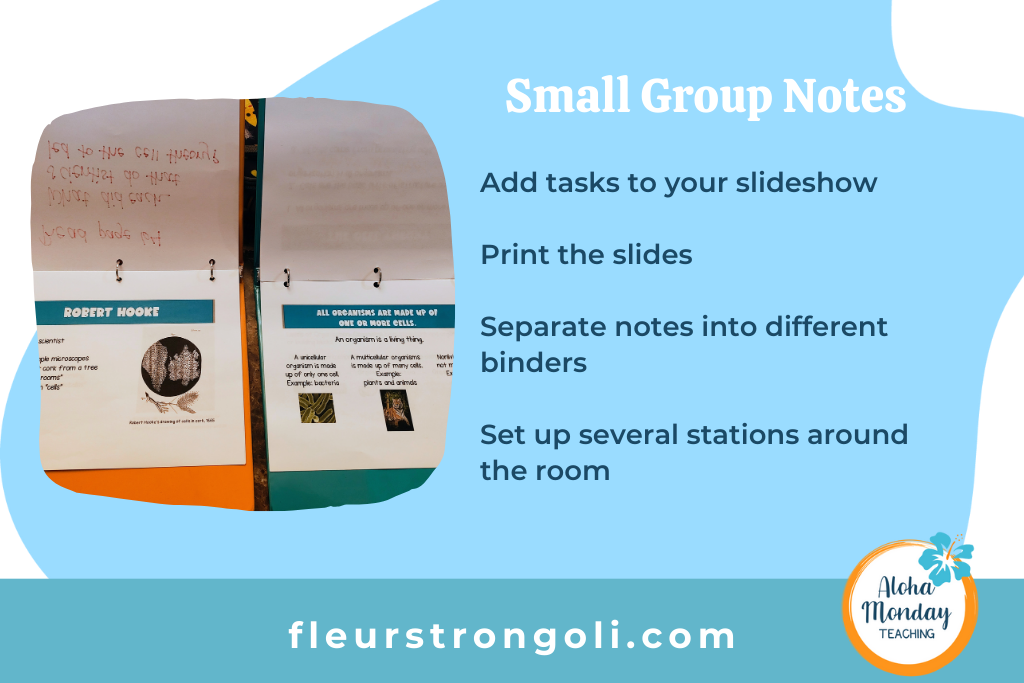
Then, just like you’d have students rotate through station activities, they rotate to take notes. It is one of my favorite way to do note-taking in my class. I am able to walk around and assist where needed. I can also choose a station and that could be my direct instruction spot.
Routines that students would need to know for this type of note-taking is how to work with a small group, appropriate voice volume, how to have group discussions, and what to do if they finish early.
Here is a resource I used at the beginning of the year to teach students how to work in groups.
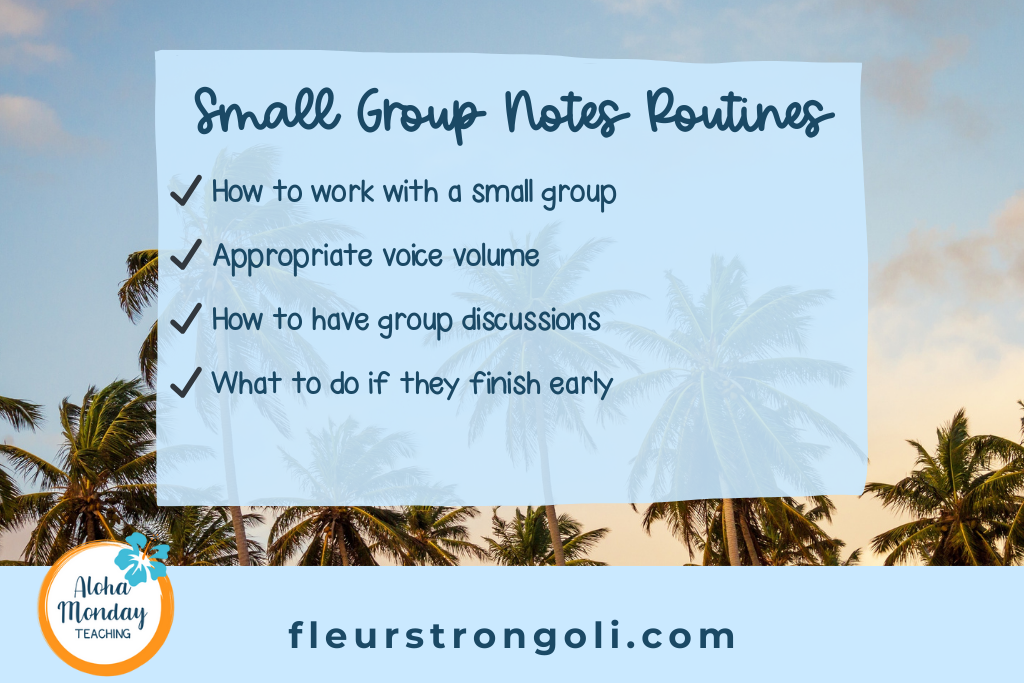
Individual or Partner Notes
The third way to take notes is very similar to group notes. The set up would be more like independent work. Students might sit at their desks or work at a lab table.
Rather than printing the slide show, you could put the presentation in Google Classroom or your school’s online platform. If you use Google Slides, you can add Pear Deck prompts to it, which students would use to respond.
Or, you can type up a page of tasks and information that you want students to focus on. In this case, they would use their books or other materials.
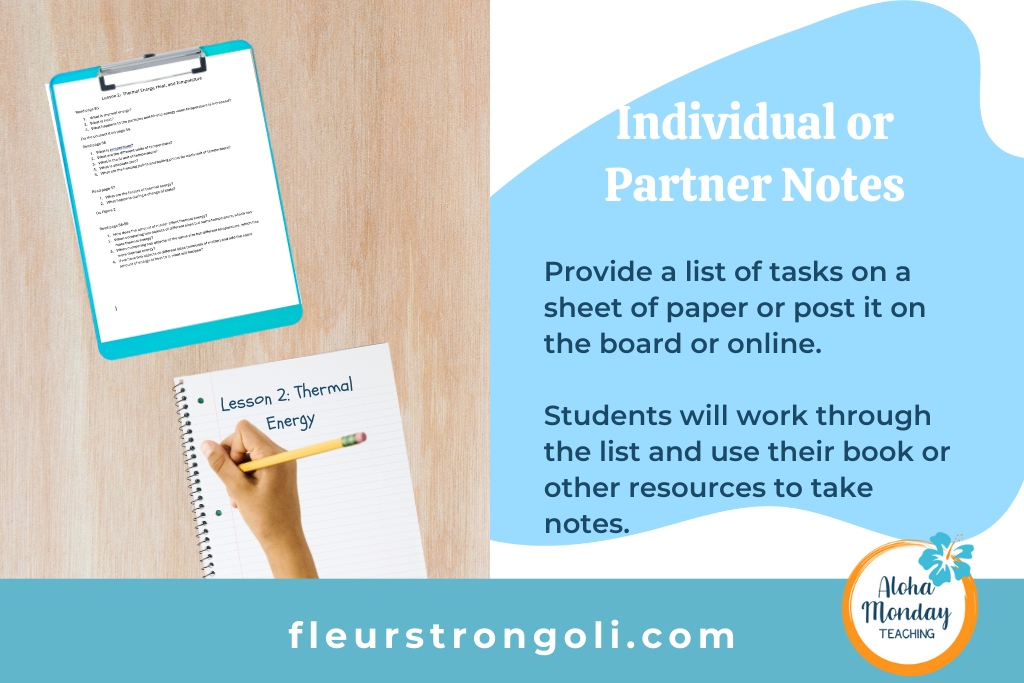
Here’s how that looked in my classroom. I printed a sheet and put it in a sheet protector. I also posted it on the screen while the students worked. It was basically like an outline of their chapter. Students read certain pages, talked or did the reading checks or figure examples in the book, and wrote down important information. I would prompt them about what to write, but they wouldn’t copy exactly what I had written.
Routines that students would need to know for this type of note-taking is how to work independently or with a partner, appropriate voice volume, how to ask a question, and what to do when they finish early.
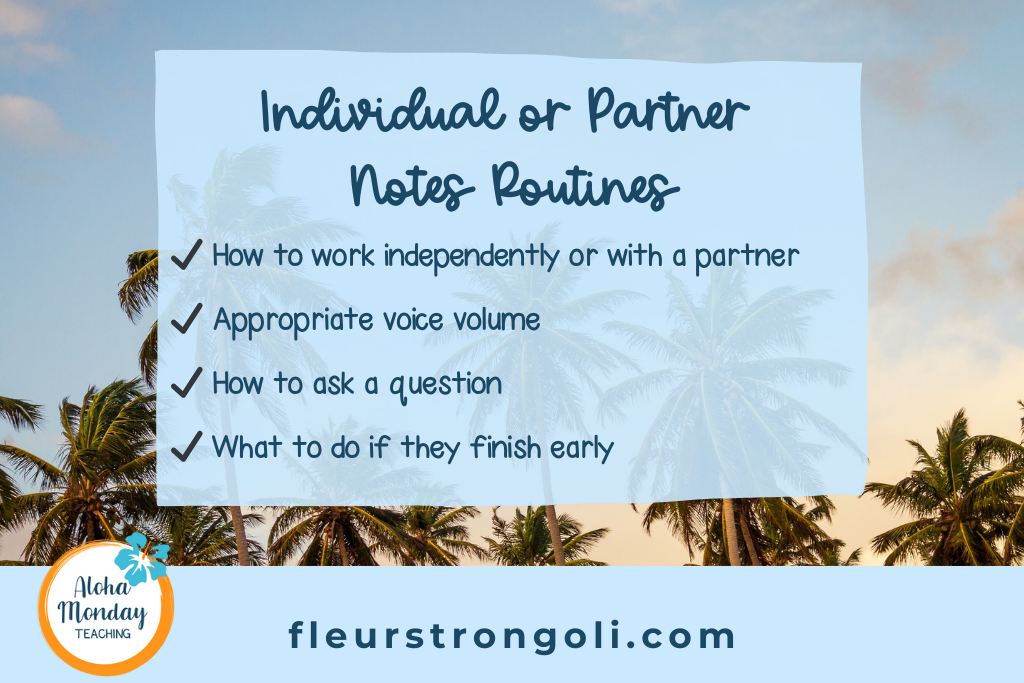
Wrap Up
Note-taking days do not have to be just sit-and-get, with disengaged students. We went over three different ways to take notes in class. In each of the ways, we made sure students were engaged. In whole group, students were engaged by using brain breaks, think time, and discussion. During small group notes, students were interacting with each other. And during partner/individual notes, students were working with someone or engaging in the text at their pace. In each, they are able to gather information and respond to it.
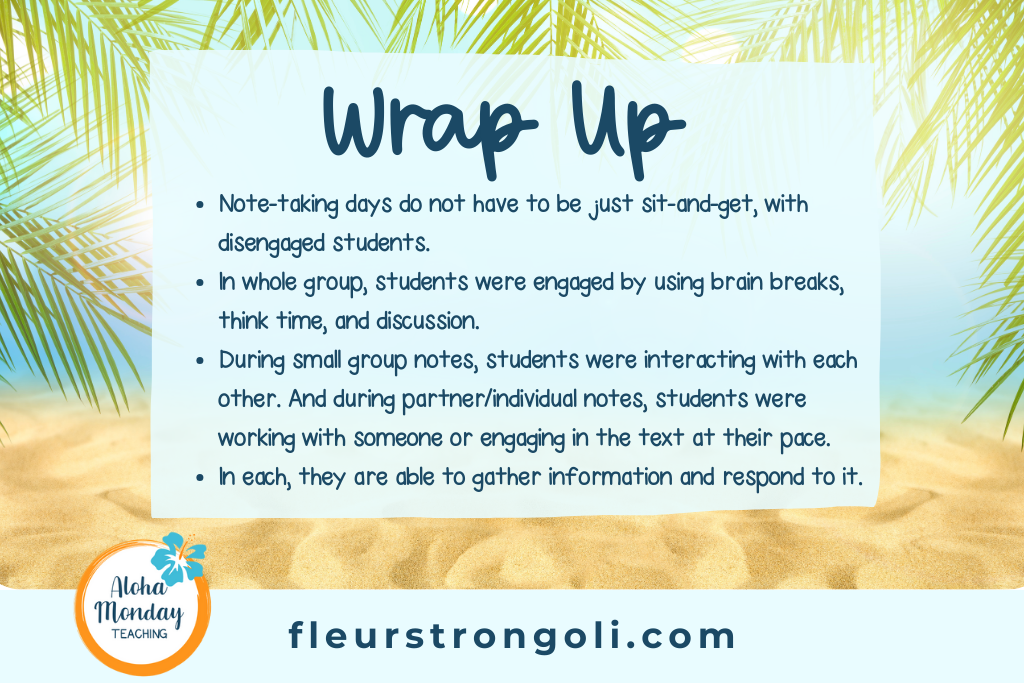
Your Turn
How do you like to present information to your students? What is something new that you will try in your classroom on note-taking days? Reply and let me know!
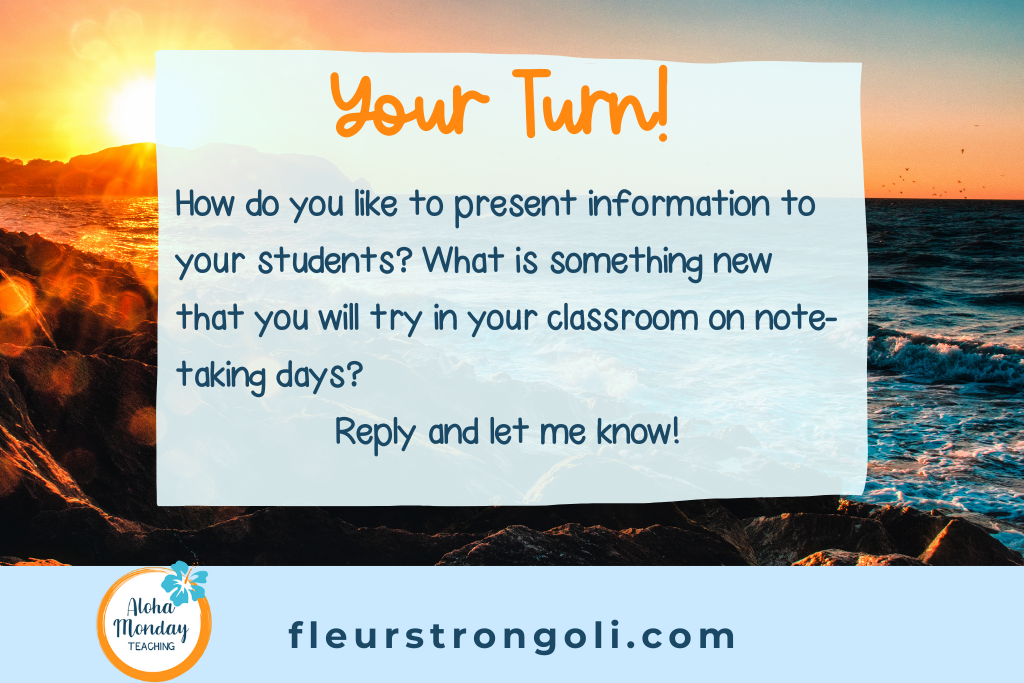
Links to Resources and Blog Posts
7 Daily Must-Do Routines to Run Your Science Classroom Like a Pro
3 Must-Haves for a Successful Explain 5E Model
Brain Based Strategies Resource
Notes on Cells- Animal and Plant Cells and Cell Theory
Back to School Activities– to teach students how to work together
Here are the first two blog posts in the series.
What Are the Important Routines for Classroom Management in the Science Class?
How to Have a Successful Beginning of Class Each Day
Products




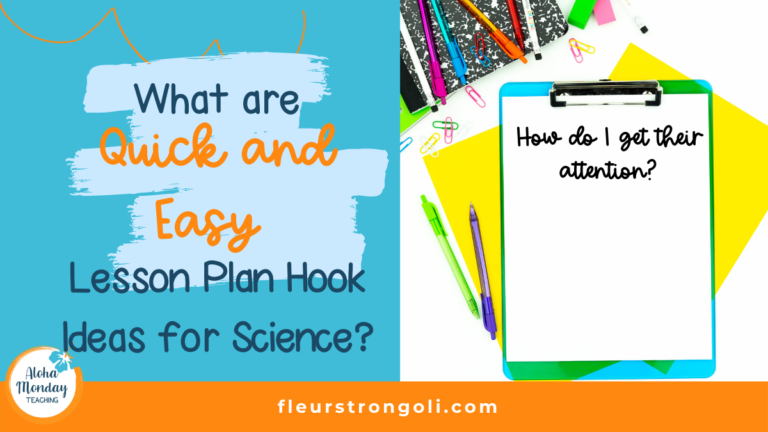


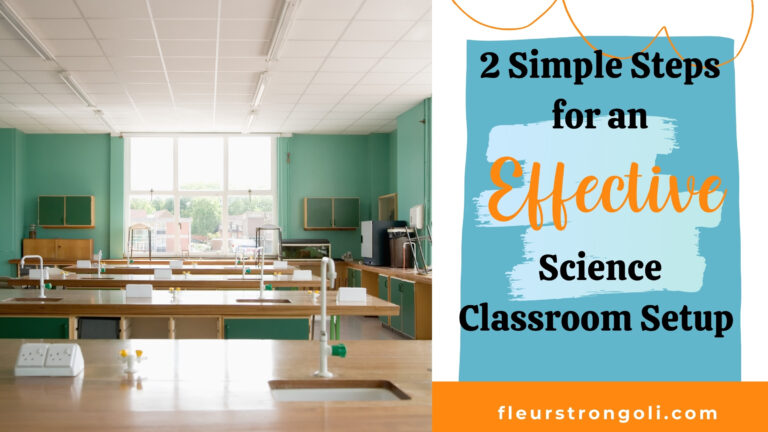
2 Comments